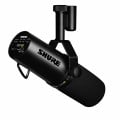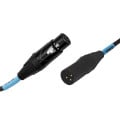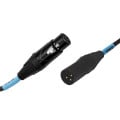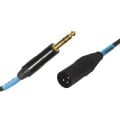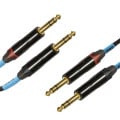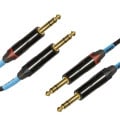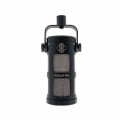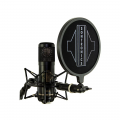- Opis
-
Szczegóły
RME Fireface UFX III
RME Fireface UFX III to profesjonalny interfejs audio przeznaczony dla wymagających realizatorów dźwięku, muzyków oraz producentów. Dzięki wyjątkowej jakości dźwięku, rozbudowanym opcjom wejść i wyjść oraz zaawansowanym funkcjom cyfrowym, urządzenie spełnia najwyższe standardy współczesnych studiów nagraniowych oraz zastosowań koncertowych. To kompleksowe rozwiązanie łączy wszechstronność z niezawodnością i wydajnością.
Cechy produktu
Fireface UFX III obsługuje aż 94 kanały audio, w tym 30 kanałów wejściowych i 64 wyjścia. Urządzenie zostało wyposażone w unikalną technologię SteadyClock FS, która zapewnia ultra-niskie opóźnienia i eliminuje zakłócenia jittera, co gwarantuje idealną synchronizację i jakość dźwięku. Dzięki zastosowaniu wysokiej klasy przetworników AD/DA i rozbudowanemu systemowi zarządzania sygnałami, interfejs jest w stanie sprostać nawet najbardziej wymagającym projektom nagraniowym i mikserskim.
Wydajność i funkcjonalność
- Obsługa cyfrowa: MADI (64 kanały), ADAT (16 kanałów), AES/EBU oraz SPDIF z możliwością przesyłania dźwięku w najwyższej jakości.
- Wsparcie dla wysokich częstotliwości próbkowania: od 28 kHz do 200 kHz, co pozwala na niezwykle precyzyjne nagrywanie i odtwarzanie dźwięku.
- MIDI: 2 wejścia i 2 wyjścia DIN oraz obsługa MIDI przez MADI, zapewniająca wszechstronność w sterowaniu zewnętrznymi urządzeniami.
- Przetwarzanie analogowe: Wejścia XLR i TRS o niskim poziomie szumów oraz szerokim zakresie dynamiki, idealne do podłączania mikrofonów, instrumentów i sprzętu studyjnego.
Zastosowania produktu
Interfejs RME Fireface UFX III został zaprojektowany z myślą o profesjonalnych studiach nagraniowych, produkcji muzyki oraz transmisjach na żywo. Dzięki wysokiej niezawodności i szerokiej gamie funkcji doskonale sprawdza się w pracy z dużymi sesjami wielokanałowymi oraz w środowiskach wymagających perfekcyjnej synchronizacji.
Szczegółowe dane techniczne
- Wejścia analogowe:
- 8 x TRS na tylnym panelu: impedancja 10 kOhm, dynamika 118 dBA.
- 4 x XLR na przednim panelu: impedancja 3.4 kOhm, dynamika 119.5 dBA, regulacja gain do 75 dB.
- Instrumentalne (9-12): impedancja 1 MOhm, zakres częstotliwości do 54 kHz, dynamika 118.5 dBA.
- Wyjścia analogowe:
- 8 x TRS na tylnym panelu, w tym 2 wyjścia XLR do monitorowania.
- 4 wyjścia słuchawkowe z maksymalnym poziomem +19 dBu (200 mW przy 32 Ohmach).
- Obsługa cyfrowa: MADI, ADAT, AES/EBU, SPDIF optyczne i elektryczne.
- Synchronizacja: SteadyClock FS, Word Clock z wejściem i wyjściem BNC.
- Zasilanie: Wbudowany zasilacz 100-240 V AC, zużycie energii 22-25 W.
- Wymiary: 483 x 44 x 240 mm (z uchwytami rackowymi), waga 3 kg.
Materiały i budowa
Solidna konstrukcja z wysokiej jakości aluminium zapewnia trwałość i profesjonalny wygląd. Kompaktowe rozmiary umożliwiają łatwe zamontowanie urządzenia w standardowym racku 19-calowym. Intuicyjny wyświetlacz LED ułatwia monitorowanie parametrów w czasie rzeczywistym.
Dołączone w zestawie
- Interfejs RME Fireface UFX III
- Kabel zasilający
- Kabel USB
- Instrukcja obsługi
Podsumowanie
RME Fireface UFX III to zaawansowany technologicznie interfejs audio, który spełni oczekiwania najbardziej wymagających profesjonalistów. Dzięki swojej wszechstronności, niezrównanej jakości dźwięku i intuicyjnemu interfejsowi użytkownika, jest to urządzenie, które znajdzie zastosowanie w każdym profesjonalnym studiu nagraniowym.
- Dostawa
-
Szczegóły dostawy produktu RME Fireface UFX III - Interfejs Audio
Wysyłka z Warszawa, Polska.
Dostawa do
Jeżeli chcesz zobaczyć dokładne metody dostawy dostępne w Twojej lokalizacji, uzupełnij powyższe pola.
- Zadaj pytanie
-
Zadaj pytanie odnośnie produktu
- Produkt faq
-
RME Fireface UFX III - Interfejs Audio - Najczęściej zadawane pytania.
Jakie są główne zalety RME Fireface UFX III?
Fireface UFX III oferuje wyjątkową jakość dźwięku, obsługę wielu kanałów oraz zaawansowane funkcje przetwarzania sygnału cyfrowego.
Czy interfejs obsługuje MADI?
Tak, Fireface UFX III obsługuje format MADI, umożliwiając przesyłanie do 64 kanałów audio.
Jakie są opcje zasilania?
Urządzenie wyposażone jest w wewnętrzny zasilacz 100-240 V, zapewniający stabilną pracę.
Czy interfejs wspiera obsługę MIDI?
Tak, urządzenie posiada dwa wejścia i wyjścia MIDI na złączach DIN oraz obsługę MIDI przez MADI.
Jakie są wymiary interfejsu?
Wymiary to 483 x 44 x 240 mm z uchwytami rackowymi.
Czy można używać interfejsu w trybie przenośnym?
Tak, jego kompaktowa obudowa i niska waga sprawiają, że jest łatwy do transportu.
Czy Fireface UFX III posiada wyjścia słuchawkowe?
Tak, urządzenie oferuje cztery wyjścia słuchawkowe z regulacją poziomu.
Jakie jest maksymalne próbkowanie?
Interfejs obsługuje częstotliwości próbkowania od 28 kHz do 200 kHz.
- Recenzje (0)
-
0.0
0 recenzji
Oceń ten produkt jako pierwszy
O producencie RME
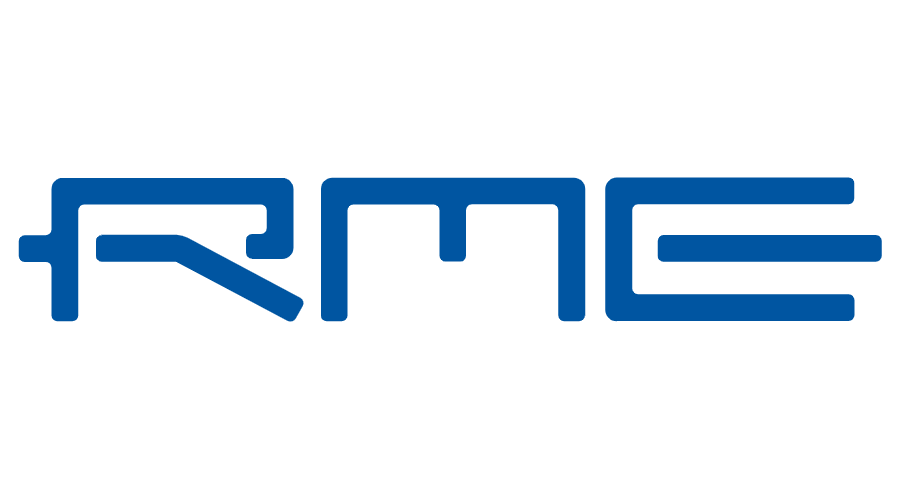
RME jest to niemiecka firma założona przez Matthiasa Carstensa w 1996 roku. Zespoł programistów pracuje nad wysokiej jakości i najbardziej innowacyjnymi rozwiązaniami audio za jak najniższa cenę. Marka produkuje np. interfejsy, przejściówki USB, łącza, przetworniki, przedwzmacniacze.
Firma
- Siedziba producenta: Niemcy
- Średnia ocena produktów: 5.0
Produkty
- Liczba produktów: 74
Statystyki napraw










